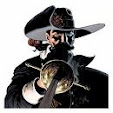We show here some pictures of several Cormorants, a new species that has been seen this winter for the first time in the resort. The photos were taken on February 19 and 20, 2013. They have been present since the New Year at least. They are winter visitors and will be going back north very soon.
The zoomed picture is of two birds seen on the lake between phase 1 and 2. They were part of a flock of 6. The most we ever saw together was 10.
The white throat, the overall size and the shape of the bill are important to the identification.
Mostramos aquí algunas imágenes de varios cormoranes, una nueva especie que ha sido vista por primera vez este invierno en el resort. Las fotos se tomaron el 19 y 20 de febrero de 2013. Estas aves han estado presentes al menos desde Año Nuevo. Son visitantes invernales y estarán de regreso al norte muy pronto.
La imagen ampliada es de dos aves vistas en el lago ente las fases 1 y 2. Eran parte de una bandada de 6. El máximo número que vimos juntas fueron 10.
La garganta blanca, el tamaño total y la forma del pico son importantes para su identificación.
Sightings of Swallows and House Martins hinted at the first arrival of Spring.
The second picture is of birds on the lake near phase 2.
The golf course was appallingly dry when we arrived, two rain showers helped to green it up a little before we left.
Los avistamientos de golondrinas y aviones comunes sugerían la llegada de la primavera.
La segunda imagen es de aves en el lago cerca de la fase 2.
El campo de golf estaba terriblemente seco cuando llegamos; dos chaparrones ayudaron a reverdecerlo un poco antes de irnos.
The third picture is the main lake. The water has never been so low. It has now dropped below the level of the reeds in most places. The reeds are dying because they are out of the water.
They have also been cut right back most of them, which has removed all the roosting sites for birds.
None of the expected reed bed birds were seen on this visit.
La tercera imagen es del lago grande. El agua nunca ha estado tan baja. Ha caído por debajo del nivel de los cañaverales en la mayoría de los sitios. Al quedar fuera del agua, los cañaverales se están secando.
Además, los han cortado en la mayoría de los lugares, lo que ha eliminado todos los sitios de descanso para las aves.
Ninguna de las especies que se refugian y anidan en los cañaverales ha podido ser observadas en esta visita.
Related posts / Entradas relacionadas
Los cinco lagos de Hacienda Riquelme (4) / The five lakes in Hacienda Riquelme (4)
Naturaleza y observación de aves / Nature and birdwatching
Índice de entradas al blog / Blog post index
sábado, 2 de marzo de 2013
Suscribirse a:
Enviar comentarios (Atom)
.JPG)
.JPG)
.JPG)




.jpg)






No hay comentarios:
Publicar un comentario